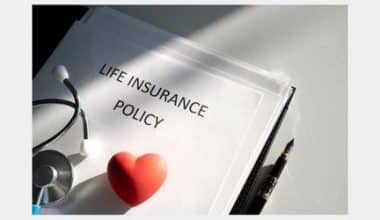30-year-term life insurance coverage might give you and your loved ones some much-needed financial security. However, it might be difficult to go through all the available information and choose the best course of action. Keep reading to learn how a 30-year term life insurance policy works, costs, and the best insurance you can get.
What Is 30-Year Term Life Insurance?
A 30-year term life insurance policy is a kind of term life insurance that offers short-term protection for 30 years. When compared to permanent life insurance, which may be quite costly, term life insurance is a far more reasonable option. If you purchase a 30-year term life insurance policy and die during that time, your beneficiaries will get the death benefit as long as you have kept up with the premium payments.
If you are 35 years old and want to buy a $500,000 policy, for example, you will be protected until you are 65 years old. The death benefit, if you die at age 55, would be paid out to your dependents as a tax-free lump sum when they file a claim with your insurer. Your heirs could use the money for anything they need it for, including paying for final expenses, clearing debt, or funding daily living costs.
In addition, if you need coverage for a longer period of time than the maximum term of a 30-year term life insurance policy provides, permanent life insurance can be a better option.
How Does a 30-Year Term Life Insurance Policy Work?
Term life insurance provides protection for a specific period of time. Your premiums are fixed at that rate for that time period. If you die while your insurance is still active, your beneficiaries will get the death benefit. The insurance will terminate at the end of the term if you do not pass away, but you may be able to renew it at a significantly higher premium.
There are two key decisions to make when purchasing a 30-year life insurance policy:
- How much coverage you want to have
- Who should receive the payout
One or more people can be named as the beneficiaries of a term life insurance policy. Your heirs are free to spend a death benefit any way they see fit, be it on final expenses like a funeral or burial or on more pressing needs like paying off student loans or a mortgage.
Purchasing a life insurance policy for a period of 30 years may feel like an eternity. However, you and your loved ones may find comfort in knowing that the coverage is there if and when it is needed during that particular period.
What Happens After 30-Year Term Life Insurance?
If you make it to the end of the initial 30 years of coverage, you will have the option to either renew your policy or cancel it. There are a number of considerations to make before settling on a course of action.
If you already have life insurance and want to keep it, you might want to consider getting a new policy with a shorter term. Because you’ll be 30 years older and have a reduced life expectancy if you choose to renew your current policy, you’ll be subject to much higher premiums.
However, it may be preferable to renew your life insurance policy if your health has deteriorated since you first purchased it. The insurance company may not cover you at all if you try to get a new policy at this point, or they may charge you far more than usual for the privilege.
Reducing coverage could make sense if you’re financially secure and don’t have any dependents. Although it’s a smart financial move, not everyone needs life insurance.
Can You Cash Out a 30-Year Term Life Insurance Policy?
Yes, it is generally possible to cash out a 30-year term life insurance policy, but the process and implications can vary depending on the specific policy and insurance company. It’s important to contact your insurance provider directly to discuss the details of your policy, including any potential surrender values or cash-out options available to you. Keep in mind that cashing out a life insurance policy may have tax implications and could impact your beneficiaries’ coverage, so it’s crucial to understand the terms and consequences before making a decision.
At What Age Should You Stop Term Life Insurance?
The decision to stop a term life insurance policy depends on individual circumstances and financial needs. Most people consider stopping their life insurance coverage when they reach a point in life where their dependents (such as children) are financially independent and there are enough savings and assets to cover final expenses and provide for the surviving spouse’s needs. This often happens in retirement, when there are fewer financial obligations.
Additionally, people might consider stopping life insurance coverage when the term of the policy ends and they no longer need the death benefit. It’s essential to evaluate your financial situation, outstanding debts, and the needs of your dependents before deciding to stop life insurance coverage. Consulting with a financial advisor can help you assess your specific situation and make an informed decision tailored to your needs and goals.
30-Year Term Life Insurance Cost
A policyholder’s age, gender, health, career, and hobbies all have a role in determining the cost of a 30-year term life insurance policy. The insurer will use this data to determine the likelihood of the policyholder dying during the insurance period. A higher risk means a higher premium for the insured.
An elder policyholder’s costs will reflect the greater likelihood that they may die during the policy’s term due to advanced age. Due to the fact that women typically live longer than men and therefore pay less each month, premiums also depend on a person’s gender.
Also, policyholders with preexisting medical issues or harmful behaviors like smoking will incur higher premiums due to their increased risk of dying during the 30-year insurance term. Given that some occupations and pastimes are inherently riskier than others, a person’s profession and interests may also have an impact on the cost of 30-year term insurance.
In addition, the intended level of protection, expressed as the policy’s face value, will also have an effect on the overall cost. The premium increases in proportion to an increase in face value. Finally, the term length will have an impact on the cost of the 30-year term life insurance policy, with longer terms being more expensive.
In the table below, we can see how costs rise for purchasers aged 30, 40, and 50 for different levels of coverage.
| Policyholder Age | $250,000 | $500,000 | $1,000,000 |
| 30-Year-Old | $30.57 | $41.94 | $78.83 |
| 40-Year-Old | $43.09 | $62.37 | $122.80 |
| 50-Year-Old | $96.85 | $155.94 | $296.79 |
Is It Better to Get 20- or 30-Year Life Insurance?
Choosing between a 20-year and a 30-year term life insurance policy depends on your specific circumstances and financial goals.
A 20-year-term policy is generally cheaper than a 30-year-term policy because the coverage period is shorter. It might be a suitable choice if you have young children and want coverage until they reach financial independence or until your mortgage is paid off. It’s also a popular option for providing financial support until retirement.
On the other hand, a 30-year term insurance policy offers longer coverage and can be ideal if you have young children and want to ensure coverage until they are well into adulthood or if you have a long-term financial obligation, such as a 30-year mortgage. This option provides more extended protection, especially if you want to lock in a lower premium rate for a longer period of time.
When deciding, consider your family’s financial needs, outstanding debts, and the duration of your financial obligations. Think about how long it will take for your dependents to become financially independent and what major expenses you want to cover, like education or mortgage payments. It’s also essential to factor in your budget and choose a policy that you can comfortably afford throughout its term. Consulting with a financial advisor can help you make an informed decision based on your unique situation.
What Happens if You Live Longer Than Your Term Life Insurance?
Many people get term insurance with the expectation that their dependents will grow and no longer rely on them financially by the time the policy ends.
Typically, when a term life insurance policy ends, the policyholder doesn’t need to do anything. When the policyholder stops making premium payments, the insurance company issues a notice that the policy has lapsed and the beneficiary will not receive a death benefit. A check for the total amount of premiums paid into a return-of-premium policy would be issued once the policy had expired.
However, if your policy has a term conversion rider, you can switch to permanent insurance coverage without undergoing another physical exam as the term nears its end. Those in need of insurance who may not pass a standard medical exam due to their deteriorating health should give this a serious look. It’s important to remember that conversion policies have hard and fast deadlines, usually a few months before your policy lapses. If you’re interested in converting, you should know when you’re required to do so under your policy.
Furthermore, when the first term expires, you may be able to extend your term life insurance policy annually with some policies. If you decide to renew your policy, you’ll be insured for another year at the same annual rate as before. Term life insurance prices increase with age because of the greater danger they pose to the insurance company, so expect to pay more each time you renew your policy.
Best 30-Year Term Life Insurance
The transition from one season to the next is an excellent time to take stock of your financial situation and make any necessary adjustments. Life insurance should be at the top of your priority list if you haven’t already purchased some. Term life insurance is a wonderful option if you need reasonably priced protection for a limited time.
Numerous providers offer reasonably priced 30-year term life insurance policies. To help you select the best 30-year term life insurance company, we compared rates and coverage options across several leading providers.
#1. Pacific Life
Pacific Life began selling life insurance in 1868 and has grown to issue $1.2 trillion in policies. It is a great choice if you want to purchase a term life insurance policy and then convert it to universal life insurance at a later time.
The three types of universal life insurance that Pacific Life offers are universal, variable universal, and index universal. Cash values in universal life policies earn a minimum guaranteed interest rate, while those in indexed universal life policies earn interest tied to a market index. The cash value of a variable life insurance policy can be invested. In addition, you may be able to convert your term insurance to a universal policy without further underwriting, as long as you do so before you turn 70.
Term life insurance policies can provide coverage in amounts as low as $50,000 and as high as $3 million. In the event of a terminal illness, you may be eligible to receive up to $250,000 or 75% of the death benefit (whichever is less) as an early payout under the terminal illness rider.
#2. Haven Life
MassMutual owns the insurance agency/tech firm hybrid Haven Life, which sells term life insurance from MassMutual and its wholly owned subsidiary C.M. Life. The highest possible rating from AM Best, given solely to insurance businesses with unquestionable financial security, has been bestowed upon MassMutual.
Haven Life is a tech-driven insurance provider with a mission to make purchasing life coverage easier. It offers insurance without the need for a medical checkup in most cases, and its Haven Life Plus policy includes perks like will-drafting software and other digital resources.
Furthermore, two types of insurance coverage are available from Haven Life: Haven Term and Haven Simple. You can get up to a $3 million umbrella policy with Haven Term. Accelerated death benefits, which allow policyholders to receive 75% of the death benefit (up to $250,000) early, are another perk of the Haven Term plan. With Haven Simple, you may get coverage from $25,000 to $1,000,000 without having to have a medical exam.
#3. Transamerica
With 11.8 million customers and 12.9 million active policies, Transamerica is a leading provider of annuities, insurance, and retirement solutions. There is a wide range of options for policy lengths and additional coverage known as “riders” available with term life insurance. When you need a lot of protection, the large coverage limitations make this an attractive choice. Faster payouts (up to $25,000) are available with their Trendsetter LB life insurance policy.
Yet, the company receives mostly negative reviews from its clientele. In terms of customer satisfaction, the company is below the industry average, according to J.D. Power’s 2022 annual research. Three thousand customers were questioned on the cost, quality of service, and openness of communication with their insurance provider.
Term life insurance policies from Transamerica can range anywhere from $25,000 to $10 million. If you meet the requirements, you might get up to $2,000,000 in coverage without undergoing a medical exam. Additional protection can be extended to your policy with “riders” for things like chronic disease, critical illness, and terminal illness.
#4. Mutual of Omaha
Offering a wide range of financial services and insurance options, Mutual of Omaha is committed to ensuring its clients’ success and peace of mind. According to J.D. Power’s 2022 U.S. Individual Life Insurance StudySM, the company is in the top three in terms of customer satisfaction among providers of individual life insurance.
Mutual of Omaha term life insurance has fixed premiums and can be converted to cash-value contracts. We like how term policies can often have expedited death benefit riders added to them at no further expense.
In addition, coverage amounts of $100,000 or more are available through term life insurance plans from Mutual of Omaha, and some policies may come with free terminal illness, chronic disease, or critical illness riders. Also, if you become unable to work due to an illness or are given less than 24 months to live, these provisions might provide you with peace of mind that your family will be provided financially.
#5. Nationwide
Nationwide Insurance was founded in 1925 and has called Columbus, Ohio, home for more than 90 years. AM Best, a credit reporting organization that evaluates an insurance company’s financial strength in order to determine whether or not it will be able to pay claims and debts, has given the company an A+ rating for financial strength. A good rating indicates that the corporation is solvent and can pay out claims.
Finding competitive rates is simple with Nationwide. You can use the website’s quote tool to see what prices are like for term life insurance. You might save as much as 20% on your premiums if you bundle your life, auto, and house insurance.
There are a number of living perks that you can add to your nationwide coverage. Some riders, such as those for chronic disease or terminal illness, allow you to access a portion of your death benefit before you actually pass away. However, 10-year insurance does not include living access benefits.
#6. New York Life
New York Life has an A++ rating from AM Best and provides term life insurance with a variety of optional riders. The paid-up insurance purchase waiver allows your spouse to use your plan to get their own coverage after your death without having to undergo a medical exam.
New York Life also provides many permanent life policies that you can convert from term insurance if your needs change in the future. Whole life insurance policies from New York Life build cash value and may pay a payout each year. Adjustable premiums and death benefits are available with universal life insurance, and the cash value in variable universal life policies can be invested.
Also, a flat premium convertible term life insurance policy is available from New York Life with a coverage period of 10–20 years. A term life insurance policy is also available, with premiums that begin cheaply but steadily rise each year. The Million Plus Level Term 10 policy is available for anyone seeking coverage of $1 million or more.
How to Find the Best Term Life Insurance
It’s easy to get caught up in the numbers when you’re shopping for term life insurance. Although cost does play a role, it is not the only one.
Some advice on how to select the most suitable term life insurance policy is provided below.
#1. Evaluate Rates From Several Different Life Insurance Providers
Term life insurance quotes and the quantity of coverage you can acquire are heavily influenced by your age and health. Life insurance quotes from different providers should be compared to find the most affordable option.
Even with previous problems, an expert life insurance agent can help you get the best rates. Working with a knowledgeable life insurance agent is beneficial for anyone, even smokers, marijuana users, and those with other “risks” (such as a heart ailment or DUI conviction).
#2. Think About Coverage Features, Not Just Price
When making a final decision on a life insurance plan, price certainly does matter. However, you shouldn’t base your decision exclusively on cost; doing so could prevent you from securing the best term life insurance policy and insurer. Features to look for in a term life insurance policy are as follows:
- A term life conversion feature allows you to convert the term policy into a permanent policy in the future. If your health declines and you need to prolong your life insurance coverage, you’ll be grateful for this option.
- Life insurance payouts that can be accessed before death for a variety of reasons. You can get your own death benefit early, for instance, if you suffer from a terminal disease and qualify for an expedited death benefit.
- Life insurance riders give you the flexibility to customize a term life policy. Your life insurance premiums can be waived in the event that you develop a serious illness in the future.
#3. Inquire About the Accelerated Death Benefit Provision of the Policy
The top-term life insurance providers offer accelerated death benefits as one type of living benefit. If you have a terminal illness, you can earn an expedited death benefit while alive. In the event of chronic or catastrophic illness, this benefit is provided by several insurance companies.
Beneficiaries will receive less money at once if they choose to use the expedited death benefit. Each insurance provider has their own eligibility requirements and maximum payouts.
#4. Inquire About Changing to Term Life Insurance
The top term life insurance providers let you transition your policy into a permanent one at any time during your coverage. Term life insurance can be converted to whole or universal life utilizing this option.
Before signing up with any insurance, be sure you know the conversion regulations. After your level term ends or you meet your employer’s age limit, you usually can’t convert.
#5. Check the Renewal Procedures for the Policy
For a particular period, usually 10, 20, or 30 years, term policies offer fixed premiums. During that time period, your premium will remain constant. After the first-level term period ends, many insurers will enable you to renew the insurance up to a specified age. The expense of renewing a term life insurance policy, however, can be rather high, so keep that in mind as you look around for a policy. Rather than rely on the possibility of renewal in the future, it is preferable to purchase a long policy upfront.
Do I Get My Money Back if I Outlive My Life Insurance?
No, you do not get your money back if you outlive your term life insurance policy. Term life insurance is a pure protection policy that pays a death benefit to your beneficiaries if you die within the policy term. If you outlive the term of the policy, there is no cash value or savings component to be refunded. The insurance company compensates your beneficiaries if you die within the period for which you paid premiums.
If you survive the entire term, the policy simply expires, and there is no refund of the premiums you paid. This makes term life insurance cheaper than cash-value policies.
Can You Use Term Life Insurance While Alive?
No, you cannot use term life insurance while you are alive. Term life insurance only provides a death benefit to your beneficiaries if you pass away within the policy term. It does not have any cash value or living benefits that you can access during your lifetime. When you die within the policy’s term, term life insurance protects your family financially. If you outlive the policy term, there are no benefits or payouts to you as the policyholder.
Why Choose a 30-Year Term Life Insurance Policy?: Bottom Line
Depending on the policy’s coverage, the death benefit on a 30-year term life insurance policy can be anything from a few hundred thousand to a million dollars or more.
By committing to this longer-term policy, you can be assured that your premiums will remain stable and you won’t have to shop around for life insurance for the next three decades. You can “set it and forget it” (as long as you keep paying the premiums). A 30-year term life insurance policy is a wise choice for young people in many different life circumstances, such as:
- If you recently got married
- Long-term obligations, such as a mortgage,
- If you have small children or children with specific needs,
- If you’re looking for coverage that will last but won’t break the bank.
Frequently Asked Questions
Is a 30-year term life insurance worth it?
Whether 30-year term life insurance is worth it depends on your individual circumstances and financial goals. It can be helpful if you want long-term family coverage, especially if you have small children or a mortgage. If you die within 30 years, your loved ones receive a death benefit, providing financial security during critical years.
However, it may not be necessary if your dependents become financially independent before the term expires. Consider your age, health, and overall financial situation. 30-year term insurance costs are cheaper for young, healthy people, making it an affordable method to get large coverage. It’s crucial to assess your family’s needs, future expenses, and the potential growth of your assets.
What is the cash value of a $25000 life insurance policy?
Even without dependents, life insurance may be worth considering. Many people get insurance with their spouse as the beneficiary to help with end-of-life expenditures. You can also give your policy’s death benefit to a charity, school, or business.
Similar Articles
- BASIC LIFE INSURANCE: What Is It & How Does It Work?
- WHOLE LIFE INSURANCE: What Is It & How Does It Work
- INSURANCE CARRIER: The Ultimate Guide
- HOW TO USE LIFE INSURANCE TO BUILD WEALTH: Detailed Guide
- BUSINESS LIFE INSURANCE: Cost, Types & How It Work






